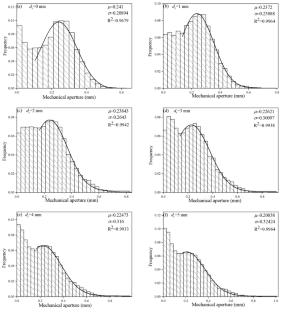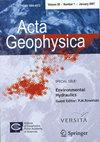Mesoscopic study of seepage characteristics with shear displacement in a single fracture
Abstract
To understand the fluid hydraulic behavior change in a fracture under different shear displacements, fluid flow simulations at different flow velocities are carried out based on the Navier–Stokes equation. We characterized and conducted statistics on the change and distribution of the fracture aperture under different shear displacements, especially the measurement of the contact area under shear displacement, which was helpful for accurately studying the effect of shear displacement on fracture fluid flow. The results showed that the shear displacement of a fracture could be regarded as dislocation between the upper and lower fracture surfaces. The fluid flow velocity became larger near the contact sites and the streamlines became denser. The resulting hydraulic aperture exhibited a negative correlation with the contact area. The relationship between the volumetric flow rate and pressure gradient during the flow field simulation could be well-fitted by the Forchheimer equation, and the steepness of the curves was related to the contact area. The linear coefficient a and the nonlinear coefficient b in the Forchheimer equation were positively correlated with the contact area. Based on the measured flow velocity, the mechanical aperture was usually an order of magnitude larger than the hydraulic aperture. The linear relationship between the mechanical aperture and hydraulic aperture was described. The positive correlation between the permeability and mechanical aperture profiled during shear explained the hydraulic behavior in the flow field.


 求助内容:
求助内容: 应助结果提醒方式:
应助结果提醒方式:


